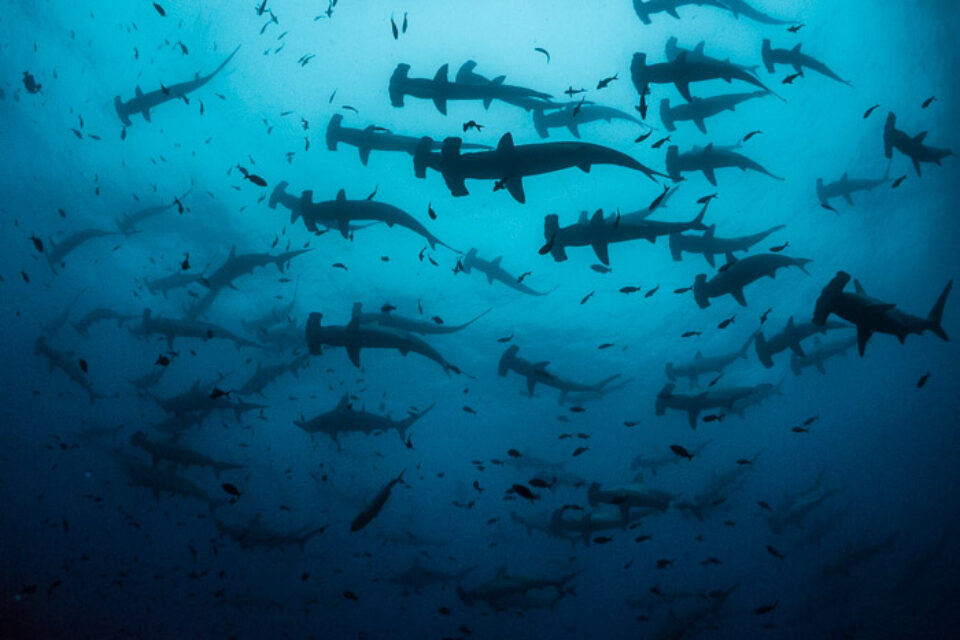

Galapagos Bullhead Shark Project: Citizen science in the Galapagos Marine Reserve
Since its discovery 175 years ago, the Galapagos bullhead shark had been almost ‘forgotten’ from science. So little was known about the species the IUCN had assessed it as ‘Data Deficient’.
Lack of information about any species can be highly problematic when it comes to understanding the best way to protect them. Without data on where a species lives, breed and feeds, it is very difficult to identify their current threats and work out how best to protect them.
Prior to the Galapagos Bullhead Shark Project supported by GCT, little was known about these sharks in the scientific literature, nor among the local population and managing authorities.
The project was supported by the Galapagos Science Center, the Galapagos National Park Service and the National Marine Aquarium and additionally involved three local students, three Ecuadorian researchers, seven international volunteers and Marine Park Rangers, who helped plan and implement all data collection. The team sought to address the lack of information about sharks in the Archipelago, which is highly problematic when it comes to managing the Galapagos Marine Reserve.
The Galapagos bullhead shark is a small, inconspicuous, bottom-dwelling elasmobranch that has been present on earth since the early Jurassic period. There are 8 currently known species of Heterodontus in the world, and this scientific denomination, meaning ‘other tooth’ in Latin, comes in response to their unusual tooth formation. Bullhead sharks are additionally known as weak swimmers.

Galapagos bullhead shark
The Galapagos bullhead shark is a small, elusive shark that is mostly found in shallow sandy and rocky areas along the coast.
Through a combination of research cruises, exploratory dives and citizen science, this project aimed to answer some of these key questions:
- How many bullhead sharks are there in the Galapagos?
- Where are the breeding, feeding and nursery ‘habitat hotspots’ located?
- Is the Galapagos species genetically distinct from the Peruvian coastal population?
- What are the current threats to the Galapagos population?
The species range extends around the Galapagos Archipelago and expands along the Peruvian coast. However, due to the lack of data it wasn’t clear whether the Galapagos and Peruvian populations are the same species. The team successfully collaborated with scientists from Peru to try and establish whether the bullheads found off mainland Peru are indeed a separate species. Tissue samples from both populations have been analysed with their results potentially evidencing another endemic species to the Archipelago.
Gaining an insight into the morphology of this species was identified by the team as key to informing future marine management plans. Therefore, using the photographs taken the male sharks’ level of maturity was deciphered by assessing their claspers for articulation and degree of calcification. Conversely, evaluation of female maturity cannot be done externally and therefore the presence of reproductive hormones was used to determine this. From this information the team has begun to get an idea of the average sizes for male and female bullhead sharks at maturity. This data is vital to understanding how this species will be affected by pressures of overfishing, as the number of adults and juveniles caught can help elucidate how this may impact upon population dynamics.

The photographs of all captured individuals have been crucial to the mark-recapture methods utilised for population estimates. These methods are part of the wider citizen science component of the project, which has sought to engage local guides to upload their own photos of sharks to the project’s citizen science website. All external photos are cross referenced against those taken by the team to form population estimates. Local involvement with the project has benefited from a series of courses run across all four inhabited islands, with a total of 500 guides attending. Each course gave an overview of the project, why it is important and how attendees can get involved.
Over 260 sightings of bullhead sharks were recorded throughout the Archipelago using scuba diving and snorkelling research expeditions, by Galapagos National Park staff and through the project’s citizen science website. Information collected on bullhead sharks for the project was used to inform the latest IUCN Red List review and the identification by the IUCN Shark Specialist Group of important shark and ray areas (ISRAs). A new “hot-spot” for bullhead sharks was also discovered in 2017 off Española island.
Community engagement was further enhanced by the running of an annual Shark Day which provided a range of educational activities and resources that helped promote the project to local families. The project will continue to gather data from the citizen science website, collaborators and the project’s field campigns to generate new knowledge, and to inform future measures to give the Galapagos bullhead shark the protection it needs.
> 260
sightings of bullhead sharks recorded throughout the Archipelago
Related articles


Updates from the Galapagos Bullhead Shark Project team




